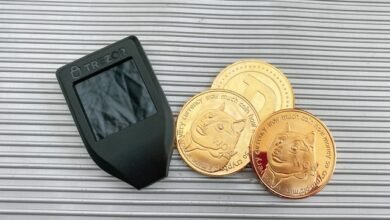Uses of GLB Files, Editors, and Converters

Uses of GLB Files, Editors, and Converters
We use our years of experience helping developers speed up their work with 3D files to explain how GLB files are used, their relationship to glTF, and what programs to use to open, view, and convert them.
In this article:
What is GLB?
GLB is a 3D file format used in virtual reality (VR), augmented reality (AR), games, and web applications because it supports motion and animation. Another advantage of the format is its small size and fast loading times. GLB files are a binary version of the GL Transmission Format (glTF) file, which uses JSON (JavaScript Object Notation) encoding. Therefore, supporting data (such as textures, shading, geometry/animation) is contained in a single file.
The Khronos group developed GLB and glTF formats in 2015. They saw a need for formats that developers could open and edit in many graphics and 3D applications. Version 2.0 of the specification (released in 2017), added physical-based rendering (PBR), which allows shadows and highlights to appear more realistic, coding updates for speed, and improvements in animation.
GLB, like glTF, is a royalty-free method for encoding 3D data. A GLB file will generally be smaller (about 33 percent) than a glTF file and its supporting files. It’s also easier to upload one file to a server than two or three, so GLB has an advantage there as well. Many developers find it easier to edit objects and senses in glTF format and then convert them to GLB for file delivery.
What is the file structure of a GLB file?
Khronos has posted specifications for glTF versions 1.0 and 2.0 on GitHub. The GLB specification is in the glTF docs. GLB files contain a header that identifies the file as GLB, version specification, and file length; JSON segment with the data contained in the glTF file; and the binary store, which contains the data contained in the supporting files.
JSON is derived from JavaScript, which is an open source format used for data exchange and can be used by many programming languages. JSON data types include arrays (an ordered list of values of any other type), objects (an unordered set of name-value pairs, and names are strings), strings (any set of Unicode characters, which can also be empty), numbers, and booleans (true or false) and null (i.e. a null value). With these, a developer or application can represent many items from a person’s contact information to a 3D object in a GLB file.
glTF uses URIs (Universal Resource Identifier), which may also be called data URLs. This piece of code allows the developer to encode objects (from text to an embedded 3D object) in a web page. In glTF files, the URI pulls data from the supporting files. Since the backing file data used by glTF files is stored in GLB files, URIs are not required. Therefore, GLB files load and process faster than glTF, which makes them useful for mobile and web-based 3D modeling applications.
How to view GLB files
GLB uses the same viewers as glTF files, including downloadable desktop viewers, mobile apps, and drag-and-drop viewers. See our guide on glTF for more details.
How to open GLB files?
You can use Microsoft Paint 3D, Microsoft Remix 3D, and Trimble 3D Warehouse to open a GLB file. In addition, any program that opens glTF files can also open GLB files. See the glTF article for more information.
How to convert GLB files
You can use glTF optimizers to convert files between glTF and GLB. There are many applications and web tools available, some convert files in both directions, some do this as well as convert files from 1.0 to 2.0, some convert 1.0 glTF to 1.0 GLB, and some do conversions while the file is being loaded.
Once you have a glTF file, you can then convert it to a GLB file. Other than that, you can use software like BlackThread.io to convert other formats to GLB. These formats include 3MF, AMF, and FBX. OBJ, MTL, glTF, Collada, PCD, PLY, JSON, STL.
To check out other conversion options, try the File-Extensions.org converter page. You can enter GLB and different file types to see which apps or websites can do the job.
How to convert GLB file to STL
There is currently no way to convert a GLB file to STL. However, you can convert STL to GLB.
How to convert GLB file to OBJ
There is currently no way to convert a GLB file to an OBJ. However, you can convert an OBJ file to a GLB. Learn more about what you can do with OBJ files.
What are the common uses of GLB files?
GLB files are useful in scenarios where animation and motion are required, or when interaction is desired. These positions include:
- Video game developers can save their work as GLB files.
- Websites and interactive ads use the GLB format to display objects that users can interact with (such as a sofa that they can rotate and view from any angle).
- AR and VR developers can also save their work in the format.
Other File Formats That Use the GLB . Extension
In addition to the binary version of glTF, there are a few files that share the GLB extension. here they are:
- Glulx Blorb Game File: Gather game resources, including graphics, level data, music, and more. The format was originally created for text games, but was adapted for graphic games.
- STK Globe file: The file, used by the STK (Systems Toolkit) application, stores information on a simulated globe. The format is used in space and defense systems simulation, intelligence analysis, satellite operations, and aircraft design.
- Gland Button: Gland is a program that creates Flash-based objects. One of the items he can create is the button, also called SwfEasy.button.
- BASIC’s Universal Unit: BASIC is a markup language created in the 1960s. Pieces of code are called modules; You can reuse global modules. GLO is sometimes used instead of GLB.
Frequently asked questions about the GLB file format
Most of the resources for GLB are the same as for glTF. See the glTF article for more information. Have more questions about working with the GBL file format? Here are some of the most frequently asked questions about working with the format.
How do I reduce the size of a GLB file?
Embellishments may cause the file to be large. Ensuring that the original textures are in a JPG or PNG format (which are smaller than other image file types) can reduce the size of the final file.
Setting up a 3D graphics application may help. For example, here are instructions for exporting GLB files in Blender. If you’re using Cheetah3D, open Preferences, click Files , then press . glb .
How do I compress a GLB file?
Draco is an open source tool created by Google that compresses GLB and other 3D files. You can find Draco’s code (in C++) on GitHub, as well as installation and usage instructions.
You can also use the compression function built into Windows and Mac operating systems, although it may not be as effective. In Windows File Explorer, right-click on the file, and then click Zipped Zip Folder. In the Mac Finder window, right-click on the file, then click Compress (file name).
You may also be able to change the settings in your graphics application to automatically save the file in a compressed format. For example, in Blender, turn on file compression in the settings. Click User Options, then check the box next to File compression.
How do I upload a GLB file to Facebook?
Unfortunately, Facebook no longer supports 3D posts (other than 3D photos), so this functionality is no longer available.
3D Modeling Services and Marxent® 3D Cloud
Creating 3D files is the first step in making 3D images accessible. A tool that allows you to make your complete product catalog available in 3D, export assets to most file formats, and deliver customer applications is essential. Marxent’s 3D Cloud is capable of publicly storing assets, providing access to team members whenever and wherever they need it. Use the solution to produce consumable format types for many other platforms and search engines, including USDZ, glTF, OBJ, and Google 3D Visual Search.
Marxent 3D modeling services are designed to deliver reusable 3D assets and quickly render enterprise-grade e-commerce applications. Our commitment is to ensure that your content monetization provides realism, consistency and speed, while optimizing scale and reusing assets. With nearly a decade of experience creating reusable 3D content for commerce, Marxent is the preferred 3D modeling services provider for major multi-channel furniture and home improvement retailers and manufacturers.



